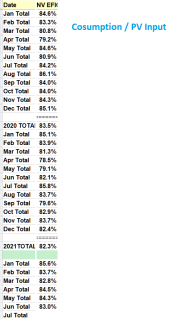Does anyone have a good rule of thumb number that can be used for estimating the standard loss for a solar panel power setup, wires, fuses/breakers, connectors SCC, battery charge in versus amount out, Inverter in versus out? I realize that it is dependent on the installation and components (longer wire runs, more or less efficient inverter and such) but it would be handy to know if there is some approximate like the 75% rule of thumb a solar panel has for rated to delivered watts.
As it is it almost seems like you have to build the thing before you really know what you are getting.
Example: For every 100 watts solar available in you can get 80 or 90 watts to power the load.
As it is it almost seems like you have to build the thing before you really know what you are getting.
Example: For every 100 watts solar available in you can get 80 or 90 watts to power the load.



